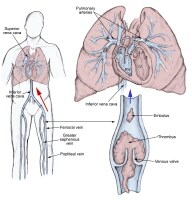

Ascites is the presence of extreme fluid inside the peritoneal cavity. People with ascites create bodily examination findings of growing stomach girth, a fluid wave, a ballotable liver, and shifting dullness. Ascites can create in individuals with circumstances other than liver sickness, which includes protein-calorie malnutrition (from hypoalbuminemia) and cancer (from lymphatic obstruction).
In individuals with liver condition, ascites is due to portal hypertension. It really is beneficial to acknowledge that liver ailment with ascites formation happens in a broad clinical spectrum. At a single finish is completely compensated portal hypertension with no ascites current just since the sum of ascites produced is significantly much less than the all over 800-1200 mL/d capacity from the peritoneal lymphatic drainage.
In the other excessive is the commonly fatal hepatorenal syndrome, exactly where individuals with liver disorder, commonly with large ascites, succumb to swiftly progressing acute renal failure. The hepatorenal syndrome seems to develop into precipitated by excessive and unacceptable renal vasoconstriction and is characterized by excessive salt retention typical of prerenal azotemia still inside the absence of real quantity depletion.
Nevertheless, the presence of clinically obvious ascites in a patient with liver illness is linked with bad prolonged-phrase survival. More than the numerous many years, numerous mechanisms have been proposed to clarify ascites formation. No single hypothesis of pathogenesis effortlessly explains all findings whatsoever factors in time throughout the natural background of portal hypertension. Portal hypertension and unacceptable renal retention of salt are essential components of all theories.
The finish outcome of ascites occurs when excess peritoneal fluid exceeds the capability of lymphatic drainage, main to elevated hydrostatic stress. The fluid can then be observed to visibly weep from the lymphatics and pool inside the stomach cavity as ascites. The underfill/vasodilatation hypothesis proposes that the primary occasion in ascites formation is vascular, with decreased effective circulating sum top in the direction of the activation of the renin-angiotensin method and subsequent renal sodium retention.
The traditional underfill hypothesis postulates that increased hepatic sinusoidal stress prospects to sequestration of blood in the splanchnic venous bed. This final results in underfilling of the central vein with diversion of intravascular quantity to the hepatic lymphatics, which, such as the central vein, drain the area of Disse.
The peripheral arterial vasodilatation or splanchnic vasodilatation hypothesis adds the idea that, with portal-to-systemic shunting, vasodilatory things (eg, nitric oxide) that are commonly cleared by the liver are as an alternative delivered in the direction of the systemic circulation, precisely in which they set off peripheral arteriolar vasodilation, especially inside the splanchnic arterial bed.
The resultant decreased arterial vascular resistance is related with lowered central filling pressures, lowered renal arterial perfusion, reflex renal arterial vasoconstriction, and elevated renal tubular sodium resorption. Retention of salt expands the intravascular sum, which exacerbates portal venous hypertension.
The imbalance among hydrostatic versus oncotic stress in the portal vein final results in ascites formation. Even although the splanchnic vasodilatation hypothesis accounts for numerous from the findings in ascites formation, the use of transhepatic intrajugular portal-to-systemic shunting (Tips) as a signifies of decompressing the portal vein in individuals with ascites gives a counterargument.
As a outcome of the system, peripheral arteriolar vasodilation appears to boost (maybe consequently of shunting of vasodilators which includes nitric oxide which are commonly cleared by the liver), though ascites is commonly considerably increased. Individuals who help the overflow hypothesis have proposed how the main occasion inside of the growth of ascites is inappropriate renal salt retention.
In this see, ascites may be the result of overflow of fluid from the intravascular quantity-expanded portal method to the peritoneal cavity. Still what triggers the inappropriate renal salt retention? A single likelihood is that there may well exist a hepatorenal reflex by which improved sinusoidal pressure triggers improved sympathetic tone or endothelin-1 secretion.
Both of these pathways may well bring about an unacceptable degree of renal vasoconstriction, a decrease in glomerular filtration charge, and, by tubuloglomerular suggestions, salt retention. Note that endothelin-1 is Either a renal vasoconstrictor along with a stimulant of epinephrine secretion, which in flip stimulates additional endothelin-1 secretion.
Rather, It really is doable that an as still unidentified product or service in the diseased liver interferes with atrial natriuretic peptide (ANP) exercise at the kidney or is in some other way accountable for an inappropriate increase in renal sodium retention. Supporters from the overflow hypothesis level to the fact that a lot of cirrhotic People have sodium managing defects inside the absence of ascites and do not have a measurable increase in renin-angiotensin exercise.
Though, scientific studies have proven that the renal salt retention in these People may well be reversed by the use of an angiotensin II receptor antagonist. Most most possible, various mechanisms contribute to the growth of ascites and to its perpetuation, worsening, or growth in varied clinical conditions.
Francesco Zinzaro has been concerned with on line promoting for just about 3 many years and likes to publish on numerous topics. Come stop by his hottest web-site which discusses of Mesothelioma Treatment method Solutions [http://mesothelioma-treatmentoptions.org/] and cancer information and facts [http://mesothelioma-treatmentoptions.org/] for the proprietor of his personal wellness-care.




